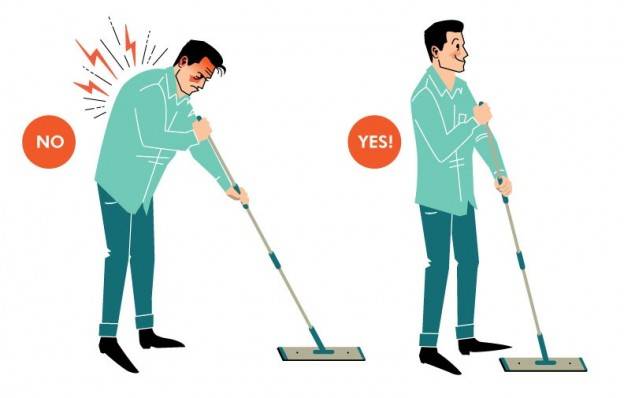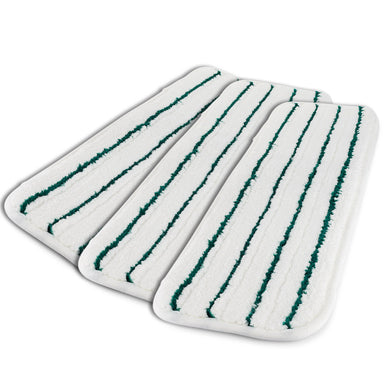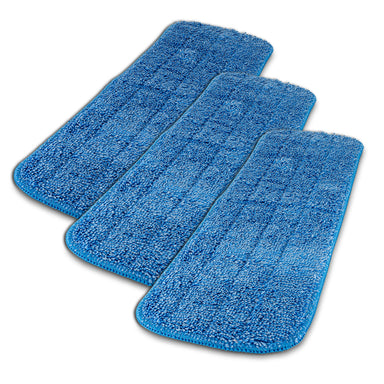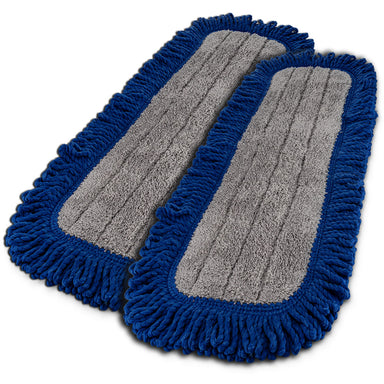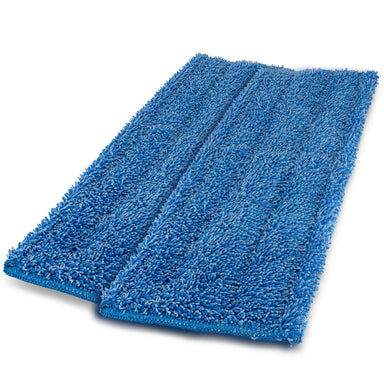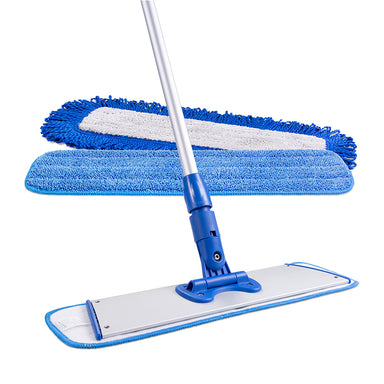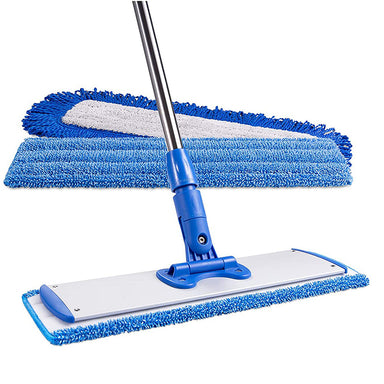MATCHING THE MOP TO THE JOB
There are essentially two types of mopping; regular maintenance and cleaning up spills.
REGULAR MAINTENANCE
Regular maintenance is most likely to cause fatigue and injury because it involves mopping a large area and it’s often done daily. If this type of mopping is done with a traditional looped end wet mop, mop handle and mop bucket & wringer, it’s not surprising that it would cause injury.
A wet looped end mop can weigh up to 8 pounds, now consider the fact that it’s being swung
around at the end of a five foot handle. No matter how ergonomic the mop handle is, or how careful the person is about keeping their back straight, elbows in, grip wide, using their lower body to swing the mop around and all the other tips we’ve learned over the years about preventing injury while mopping, it’s still a strenuous activity when performed day after day. The only way to drastically reduce the exposure to injury is to completely change the way we maintain floors.
This is where a microfiber flat mop system come in. People are rarely injured while dust mopping, it’s almost always from wet mopping because of the physics ofswinging a mop handle attached to a 5+ pound wet mop. Dust mopping is a completely different motion. You’re not swinging around a heavy mop; you’re also not extending the mop out away from your body as people tend to do when wet mopping. When dust mopping the weight of the mop is resting on the floor and the handle is nearly vertical, close to your body. This is a much more ergonomic method and posture. You use microfiber flat mops in exactly the same way. Plus, our microfiber mops and tools are much lighter than conventional mops. Our 24” Microfiber Mop Tool with a damp wet pad on it weighs just over two pounds. That’s a great size for an average size person (more on that later).









